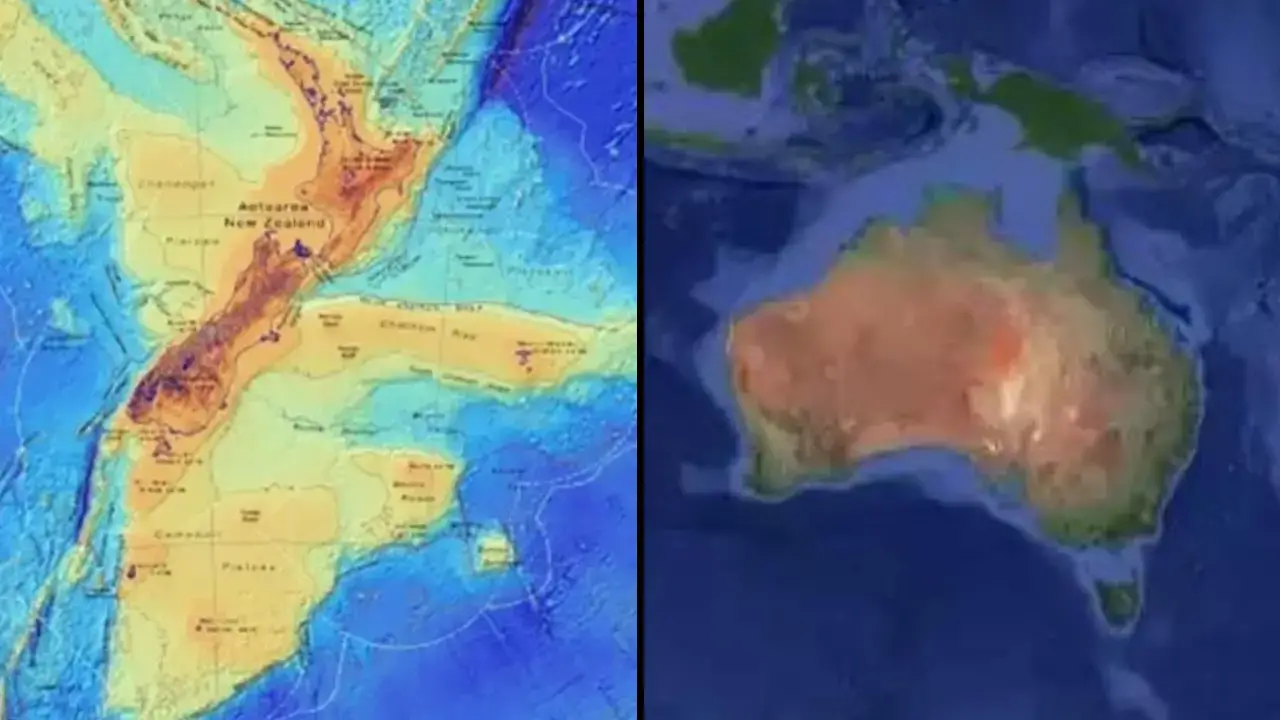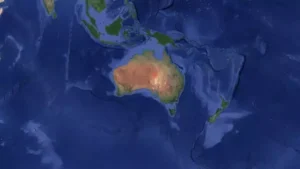
Credit: GNS Science
Scientists Discover Missing Continent After 375 Years
Scientists say they’ve discovered a ‘missing’ continent after 375 years.
Up until now, the world has had seven known continents: Africa, Antarctica, Asia, Europe, North America, Australia (Oceania), and South America.
These diverse landmasses vary in size, geography, and culture, collectively shaping the planet’s global ecosystem and human civilisation.
Related Article: Scientists Say They’ve Finally Discovered What Came First The Chicken Or The Egg
Related Article: Expert Solves Mystery Of Why We Never Seem To See Baby Pigeons
In a remarkable rediscovery, geologists have finally confirmed the existence of a long-lost continent known as Zealandia, also referred to as Te Riu-a-Māui in the Māori dialect.
This continent, once part of the ancient supercontinent Gondwana, had remained hidden for centuries, submerged beneath the ocean’s depths.
Its recognition is the culmination of nearly four centuries of exploration and theorisation, making it a fascinating chapter in the world of geology and geography.
According to the BBC, the tale begins in 1642 when Dutch sailor and businessman Abel Tasman embarked on a voyage to locate the elusive eighth continent, Terra Australis, as it was known in Latin.
Departing from Jakarta, Indonesia, Tasman’s voyage led him to the Southern Island of New Zealand.
However, before he could set foot on the land, he encountered the local Māori, who were far from welcoming.
Their displeasure with the European sailor was evident as they attempted to obstruct his approach to the mainland and impede the passage of messages to his main ship.

Ultimately, Tasman returned home, having failed to discover the new continent, but inadvertently, he became the first to record information about this mysterious land.
Fast forward almost 400 years and GNS geologists have unveiled the discovery of Zealandia, a vast continent spanning approximately 1.89 million square miles (4.9 million square kilometres).
To the astonishment of many, most of Zealandia still lies submerged beneath the ocean’s surface.
It was part of the ancient supercontinent Gondwana over 500 million years ago, along with Western Antarctica and Eastern Australia.
Roughly 105 million years ago, Zealandia began its separation from Gondwana, an intricate geological process that continues to be a subject of study and fascination for scientists.
Andy Tulloch, one of the geologists at the Zealand Crown Research Institute GNS Science who played a pivotal role in the 2017 rediscovery, explained the process.
Related Article: One of Earth’s Great Mysteries Of How The Egyptians Moved The Pyramid Stones Has Been Solved
Related Article: Man Lived For 82 Years Without Ever Knowing What A Woman Looked Like
He said: “Zealandia started to be pulled away from Gondwana,” eventually sinking beneath the waves.
Remarkably, over 94 per cent of Zealandia remains submerged, with its continental shelf lying beneath 6,560 feet (two kilometres) of water.
The discovery of Zealandia has not only unveiled a long-lost continent but also demonstrated how seemingly evident facts can remain hidden for extended periods.
Tulloch emphasised this aspect, stating: “This is an example of how something very obvious can take a while to uncover.”
His colleague Nick Mortimer, who led the research, noted the unique nature of Zealandia, remarking: ‘Every continent on the planet has different countries on it, [but] there are only three territories on Zealandia.”
Zealandia’s reemergence on the scientific stage showcases the boundless mysteries still concealed beneath the Earth’s surface and underscores the significance of ongoing geological research.